Chandris Lines
Chandris purchased the America for $4,250,000 (us) in 1964 and she sailed from New York to Pireaus where she was officially re registered as RHMS Australis (Australian Lady). The largest passenger liner to be aquired by Chandris, her career set to take her back to the Pacific where 20 years earlier she plied in far worst circumstances.
For the first 9 months Chandris converted the liner at Pireaus, her three class accommodation became a one class and her hull was stripped back and painted white, incidentally these refurbishments continued on and off to late 1967 which is why the early photos of Australis still show the aft mast etc.
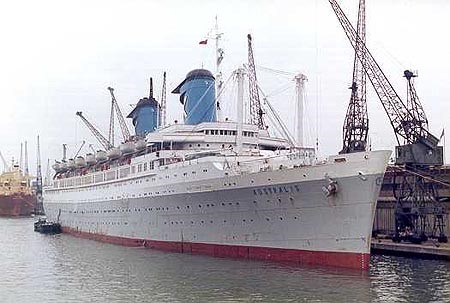
Over this period of time her ‘AMERICA’ appearances were somewhat retained but the noticeable changes were that her aft promenade decks were extended, a swimming pool was constructed upon her reworked lido deck, the removal of her rear main mast and a new hook mast fitted to her aft funnel. The Boat deck had an extra lifeboat fitted either side and the old tourist class narrow windows were plated up.
Also most importantly was the installation of airconditioning to all of her cabins for passenger comfort. The renovations actually took some 3 years in total to do. Two of her aft cargo holds were remodelled to accompany the changes required by Chandris, overall at a cost of some $5,500,000.00, they gained around 350 extra cabins.
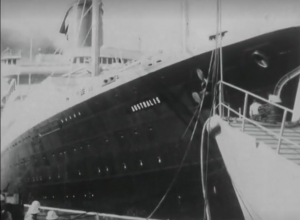
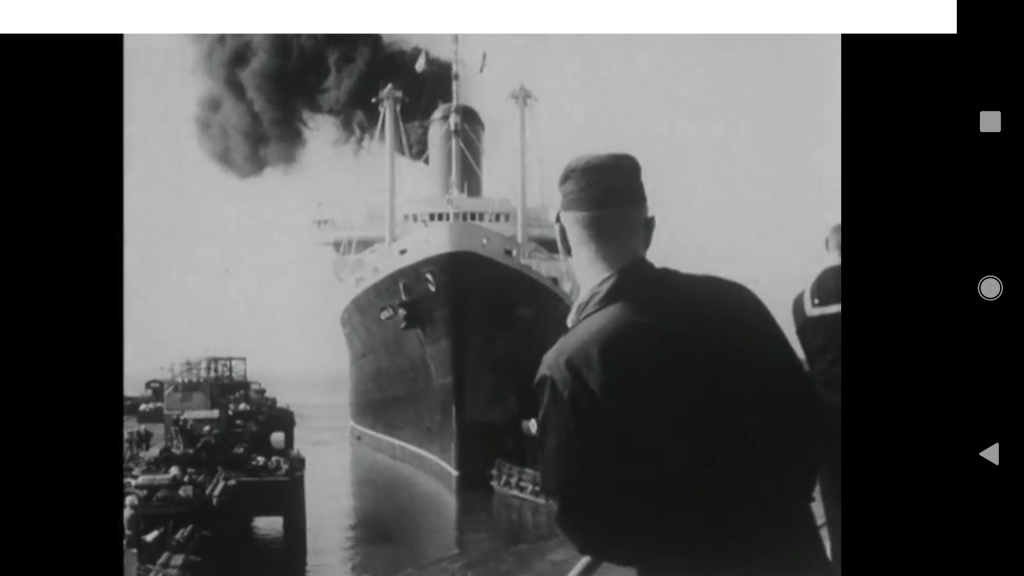
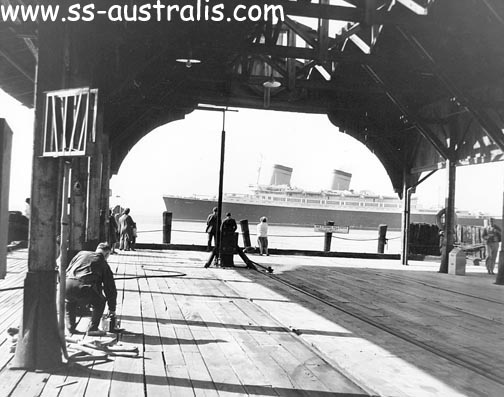
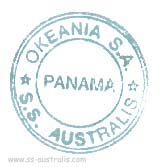
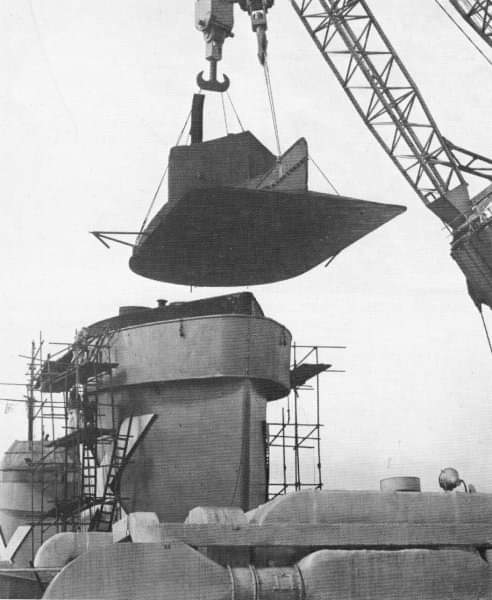
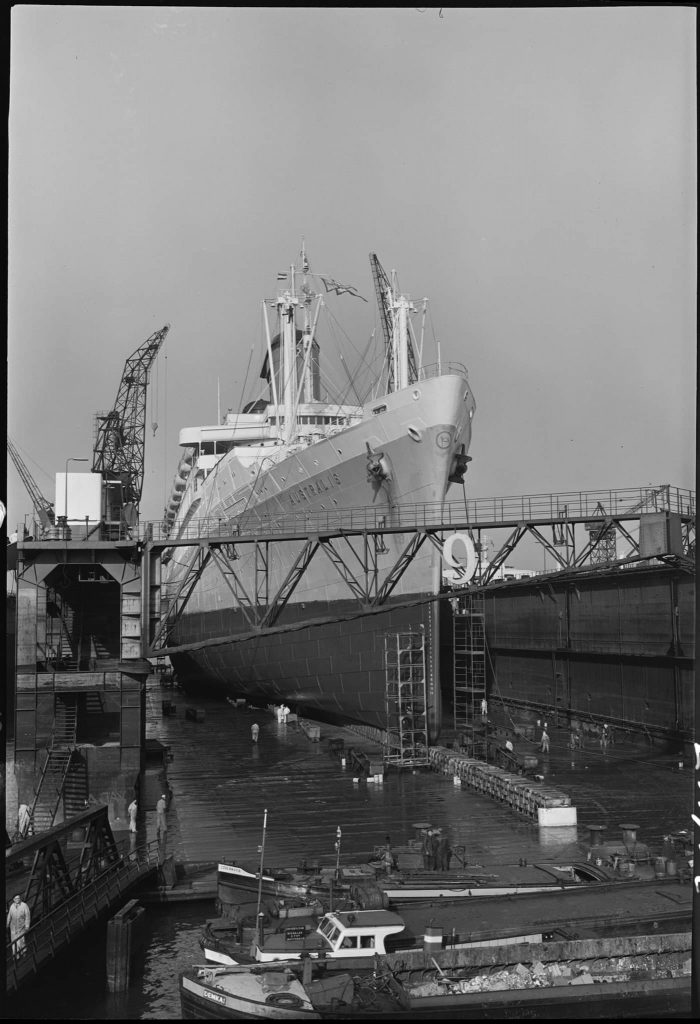
Her first voyage on 21st of August 1965 under the Chandris flag was to steam West through the Mediterranean Sea. She made her maiden arrivals at Rotterdam and Southampton before returning to the Mediterranean and then the Suez Canal. Once clear of the canal ‘AUSTRALIS’ stopped at Aden, Colombo, Fremantle, Melbourne, Sydney Aukland and Wellington. Her main role was bringing English, Dutch, German, Greek, Yugoslav and Italian immigrants to Australia, whilst also accommodating full paying passengers for round the world trips.
However her all white hull was soon causing a headache to Chandris, nothing could be done to keep her white and rust free and in desperation in late 1967 they painted the hull grey, which proved more successful.
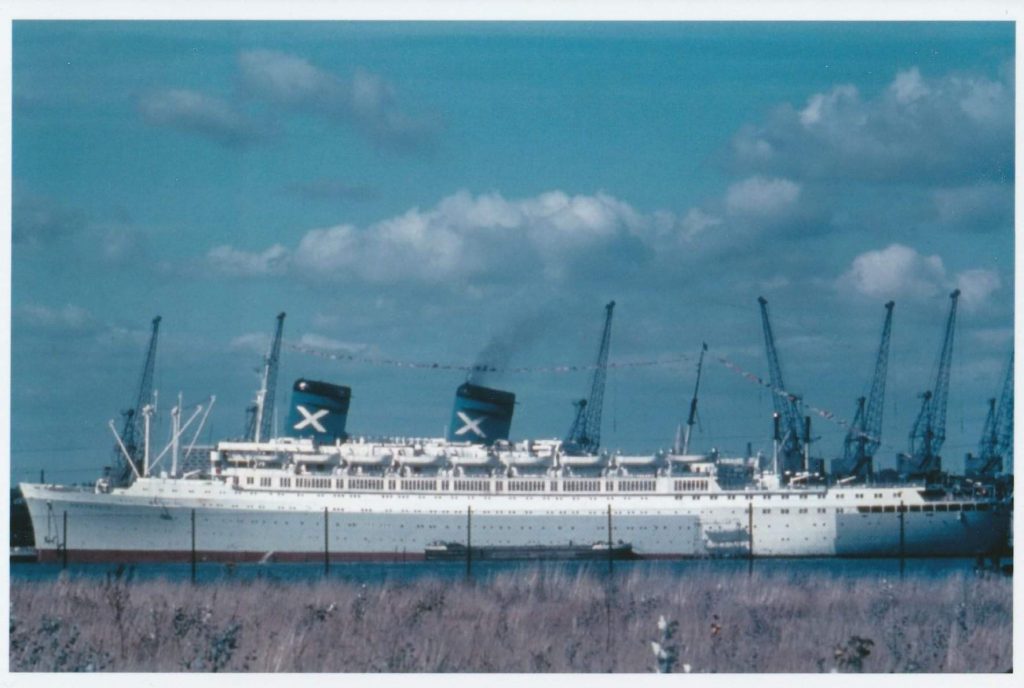
During her 1967 trip when bound for Australia the ‘SS AUSTRALIS’ was diverted from her normal route via the Suez canal, due to the war and the canals closure, to a more southerly course, that via Cape Town. Also in 1967 the prefix of RHMS (Royal Hellinic Mail Ship) was dropped and the prefix “SS” was used ( Steam Ship) she was then re registered through Pananama.
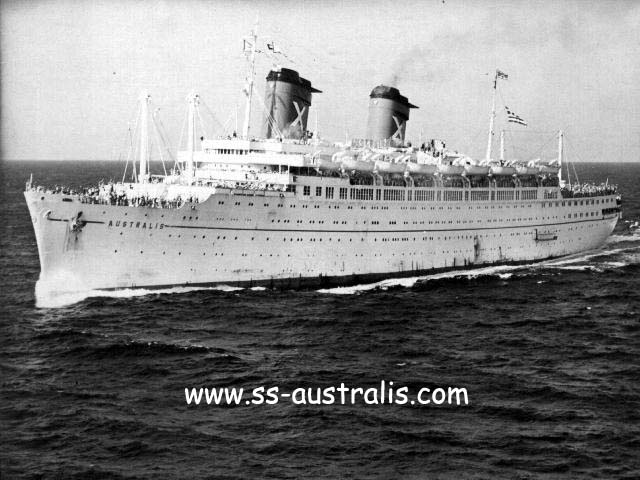
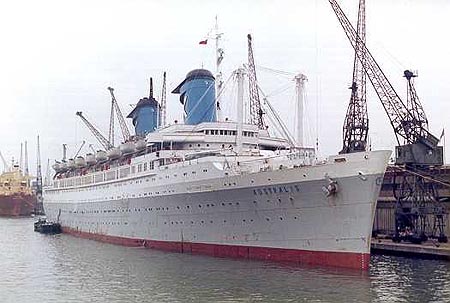
FIRE – FIRE – FIRE – man the hoses all passengers to lifeboat stations!!!!.
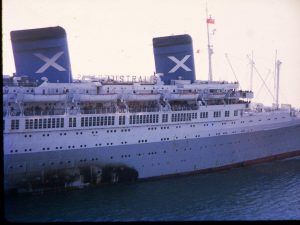
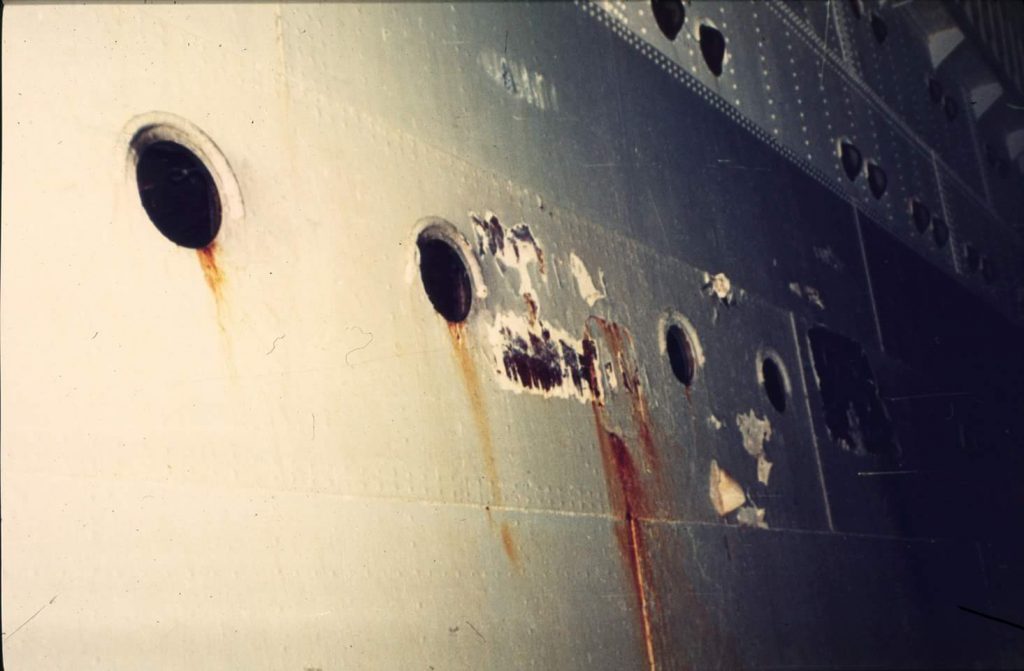
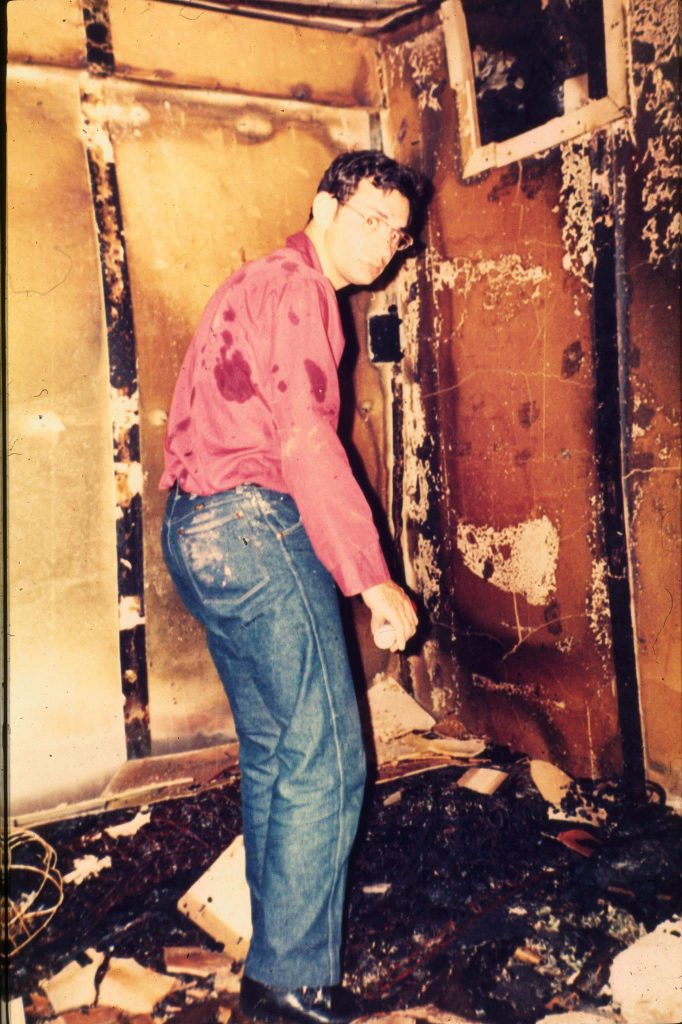
Yes the worst thing that could happen to a ship at sea and it happened on board the Australis. On 22nd October 1970, a fire broke out in the galley whilst the Australis was between Auckland and Suva in the South Pacific. The message came through to Chandris head office “The Australis is burning we are abandoning ship”. She had 2,446 passengers and 586 crew on board. The fire started at 3.30pm and spread upwards from the galley through 7 decks buckling the dance floor in the ballroom. The fire raged for 9 1/2 hours through to 1 am that morning. All passengers had to remain at lifeboat stations the entire time. However the crews managed to control the blaze and temporary repairs were made. Water was waist deep in her galley when later inspected. After 12 days in Fiji she was repaired and again sailed her normal route.
Once the Arab and Israeli conflict had ended she again, in March1976 (voyage 53 Southbound – incidentally my trip), steamed the Suez Canal route to Australia. In the meantime P & O had ceased the line voyages by the CANBERRA and ORIANA in 1975 allowing AUSTRALIS to be awarded the title of ‘the world’s largest express liner in regular scheduled service’.
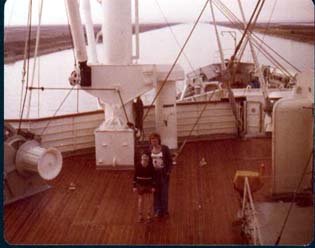
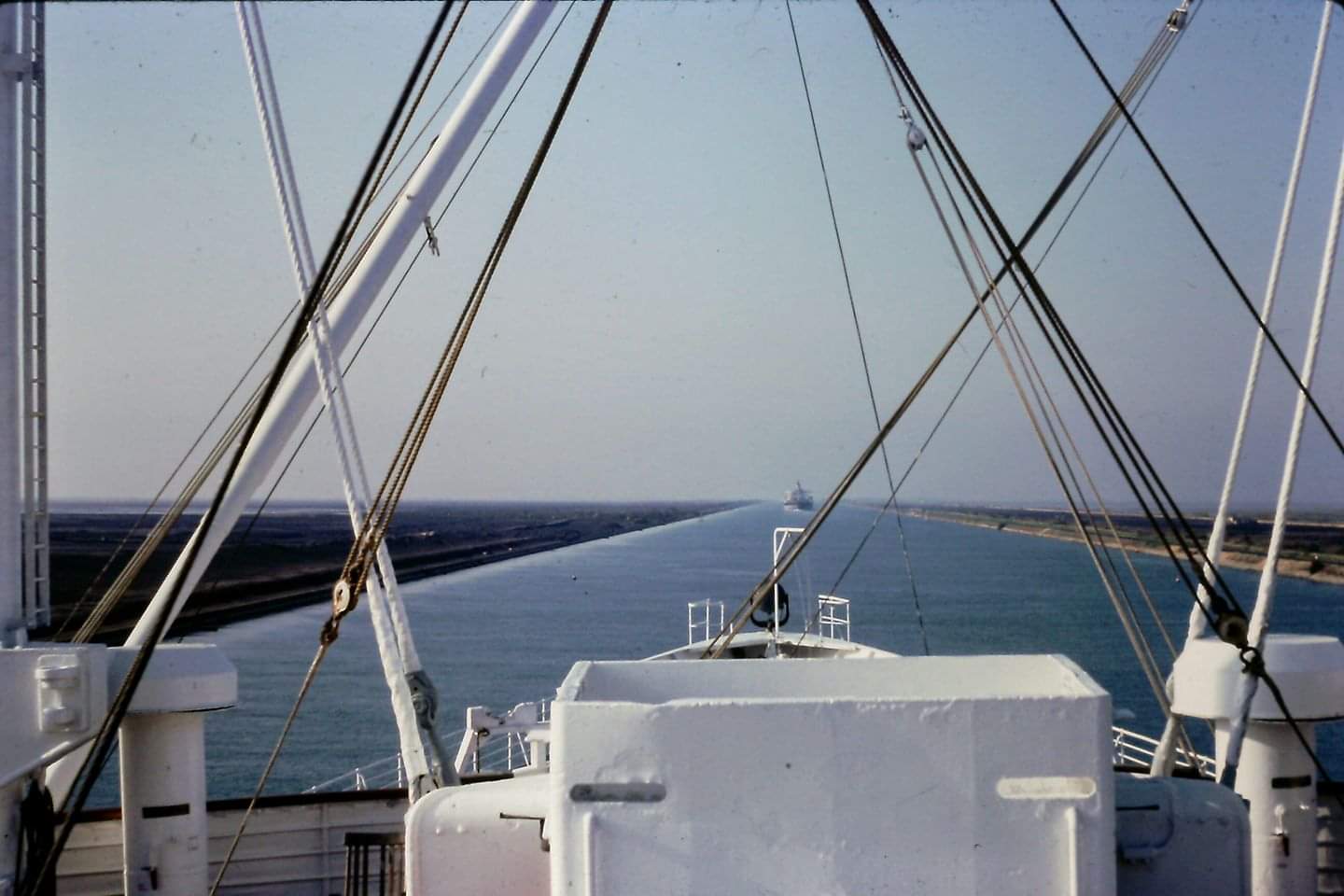
The running costs for the AUSTRALIS in 1973 were about $20,000 per day, $5,000 of which would be her fuel costs. With her fuel tanks holding some 6,500 tons she could steam for 35 days without bunkering, but Chandris kept her ‘topped’ up to ensure she could take advantage of cheaper fuel at cheaper ports (Las Palmas, Cape Town and Fremantle).Port costs would for example cost Chandris some $20,000 per day in Southampton – remember these are all at prices in 1973 …..
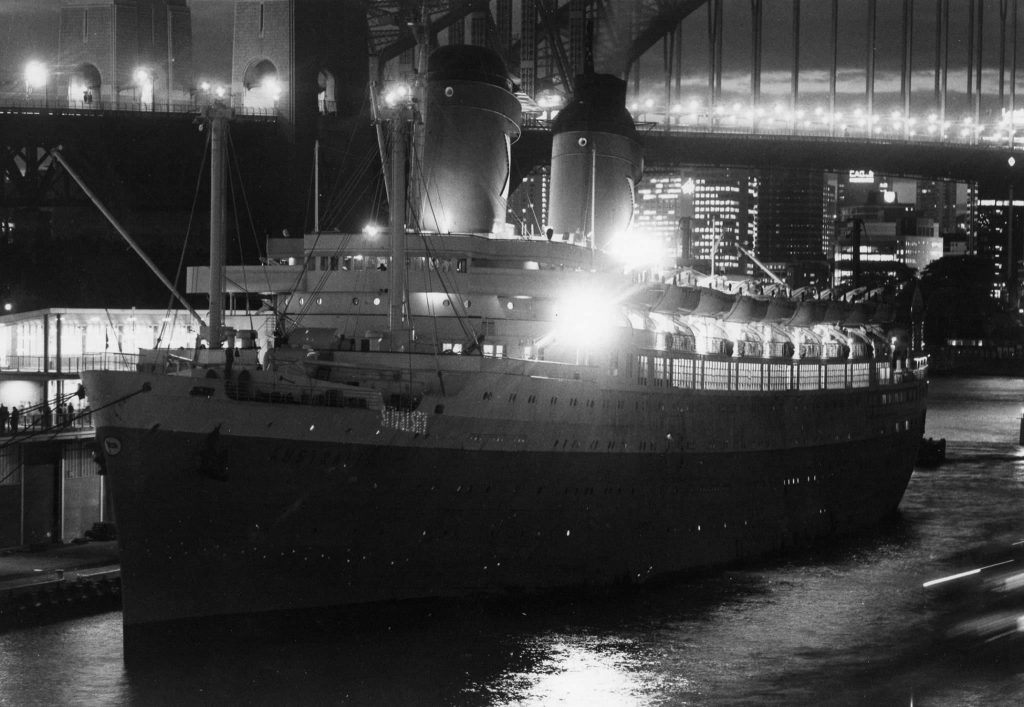
The problem of catering for more than 2,000 passengers caused some minor problems with storage, remember the holds were converted and the more passengers you have the more baggage is stored down below. The amount of fresh water used daily, especially in the warmer climates would be approximately 450 tons per day, in the Pacific she could be at sea for 2 weeks without touching port and the run from Port Said to Fremantle a week. For her to hold this amount of fresh water was simply out of the question and apart from an emergency supply of 2000 tons of fresh water, the water used onboard was desalinated sea water.
Stores were kept in weird places, for example one curious passenger was up on the funnel deck, when he saw a door open in the forward funnel. (now we – after reading this web page would have realised the forward funnel was a dummy used to enhance her apperance, the average passenger would not). He walked over to the door in the forward funnel and looked in hoping to view the engines down the shaft. He could not believe what he saw ” The funnel was full of bloody potatoes” he was heard to comment
As the AUSTRALIS main passengers were those emigrating to Australia, the ship was usually full on the trip to Fremantle, Adelaide, Melbourne and Sydney. On departing Sydney and heading through the Pananama Canal back to Southampton the ship would be running at a loss so extrememy discounted fares were offered for round the world trips to Australians and New Zealanders to help in making the trip viable, until a full compliment of passengers were again embarked in Southampton.
Due to the long hours and days at sea the passengers were entertained, by themselves. There was a compere on board and a ships band, however all the other shows and functions were ‘staffed’ by passengers having a good time. When Chandris was questioned on wether they were skimping on passenger entertainment this was there answer ” What many passengers do not realise is that we are not running a luxury cruise, many cruise liners operating charge double what we charge, our main objective is to get our passengers safely to their destination”
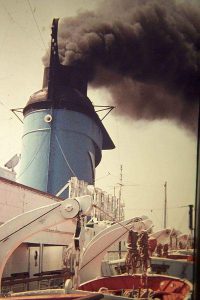
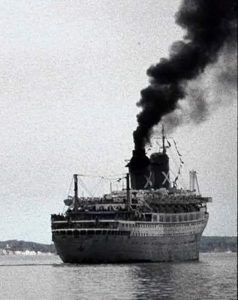
Because of her ever increasing running costs, Chandris decided to withdraw her in 1977 rather than offer poor service, however the implementation of the jet age and in particular the long haul Jets (707 and 747) the passenger trade by sea dropped away. The Australian Government, after a lengthy emmigration period cancelled the contract for assisted passages to Australia.
Chandris lines had no option but to offer her for sale.
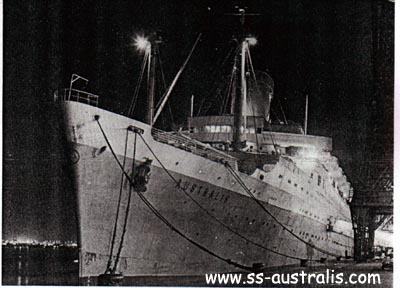
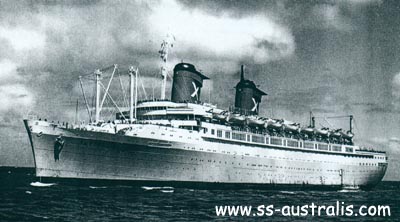
After her final trip to Australia arrangements were made to have her laid up in Timaru on the south island of New Zealand whilst she awaited her sale and hopefully a new life.
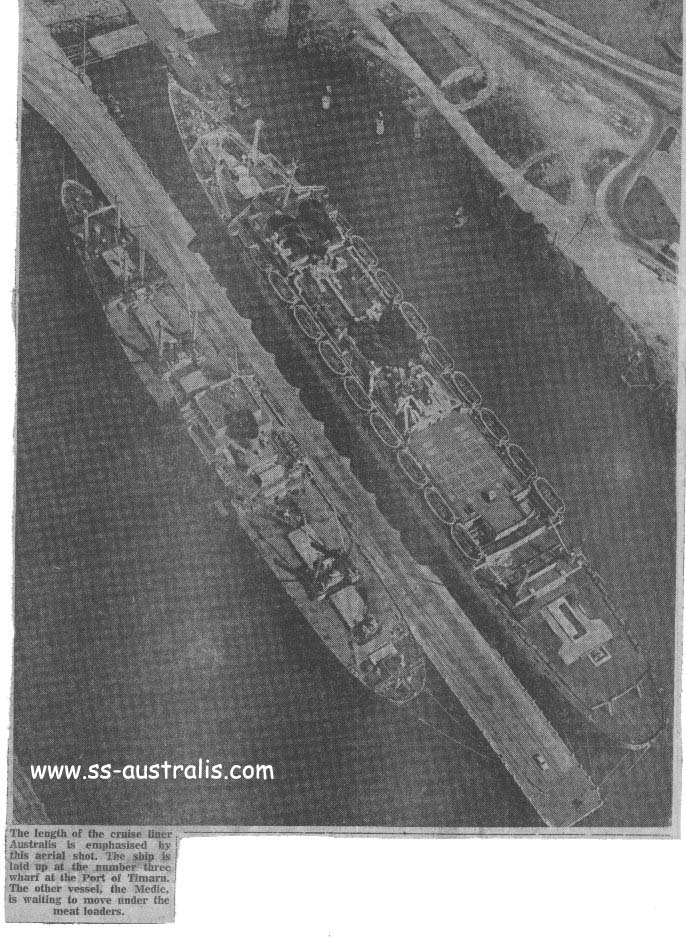
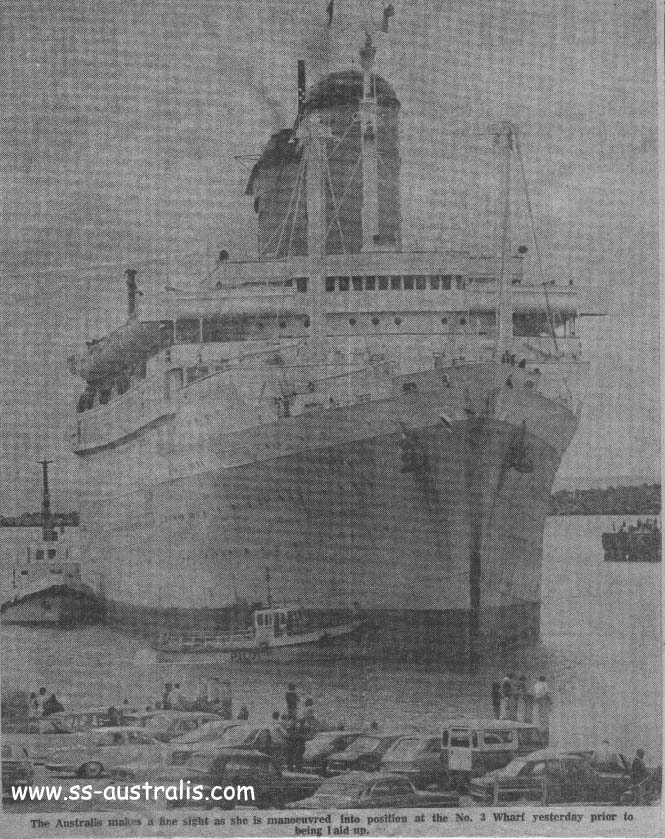
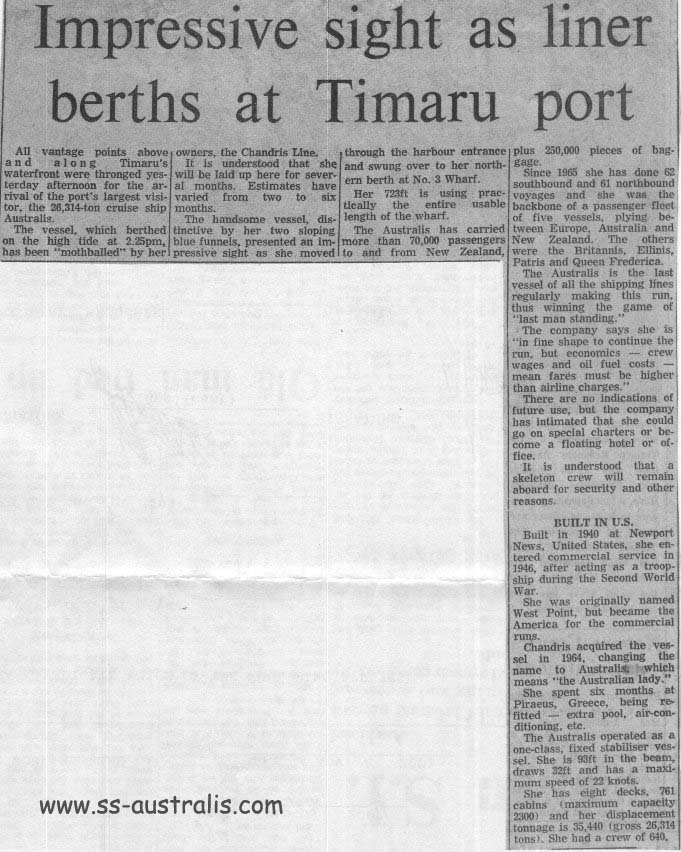
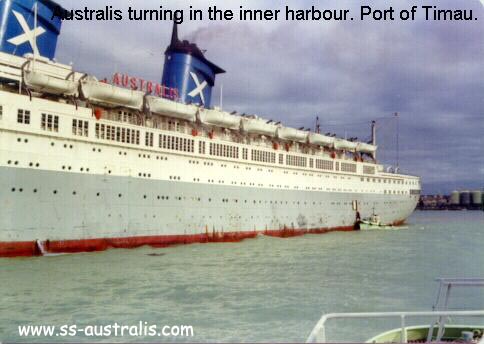


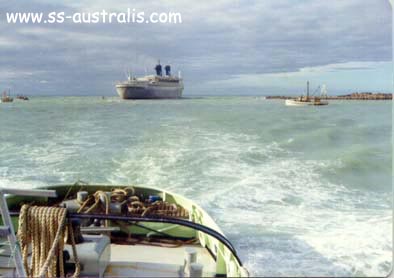
Click to move to her next chapter : SS AMERICA VENTURE CRUISES 1978 or click here to return to the history tabs
